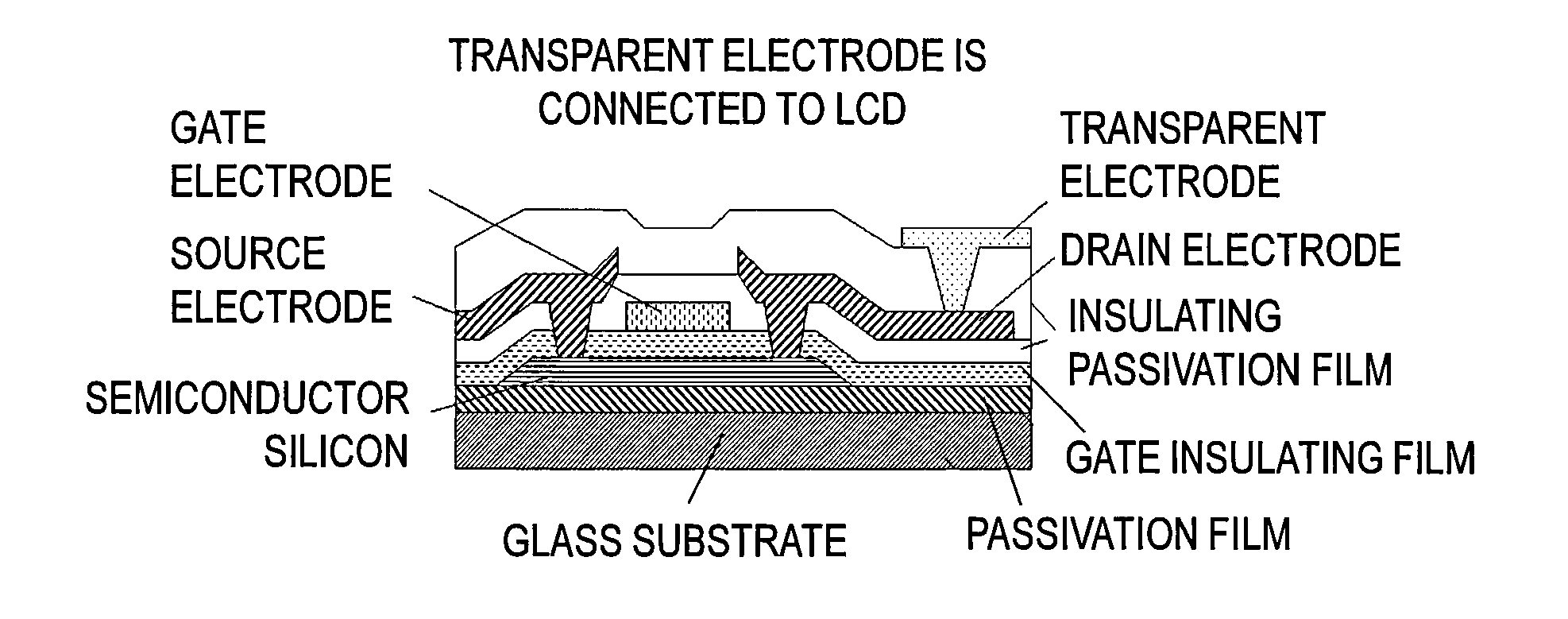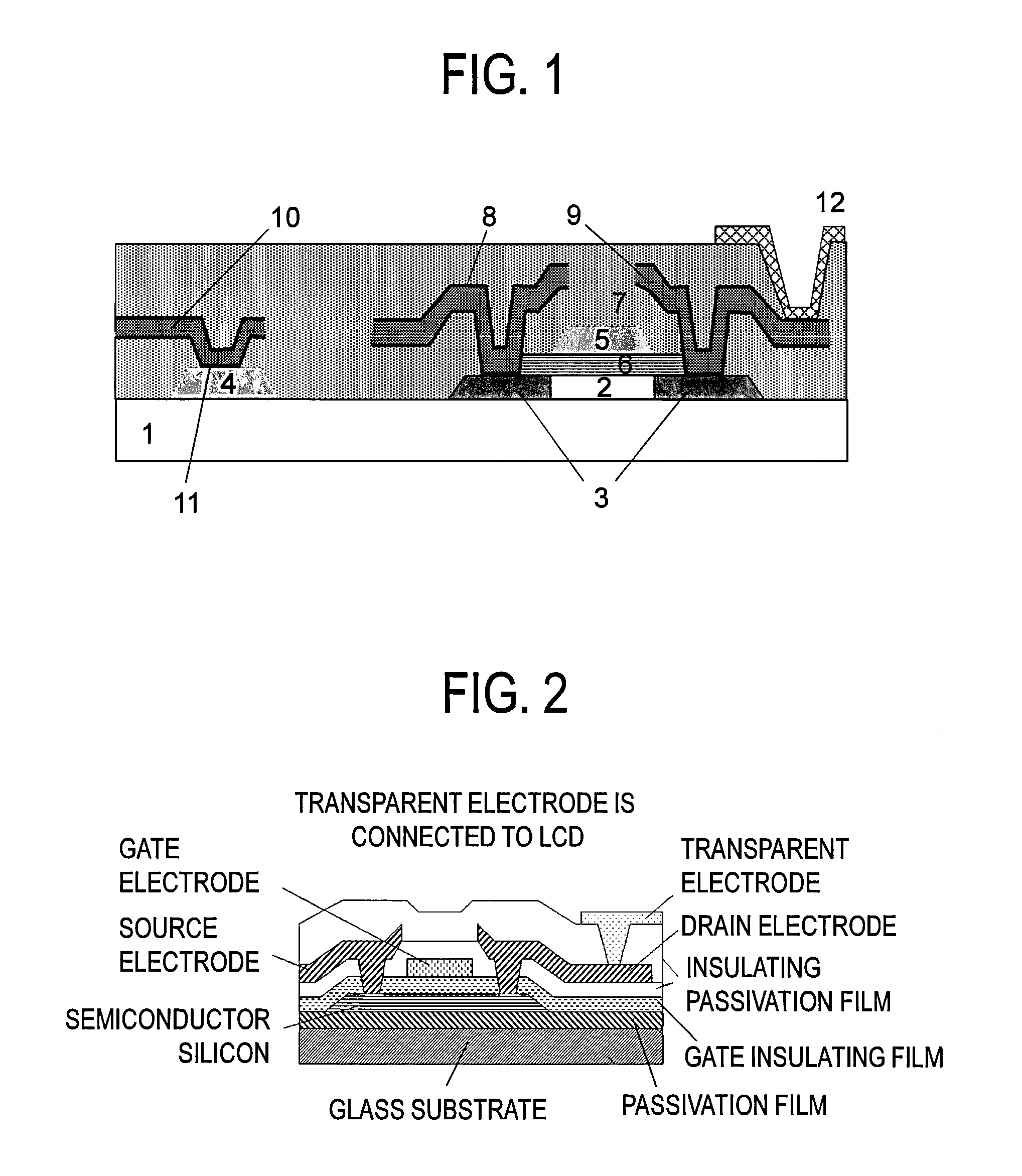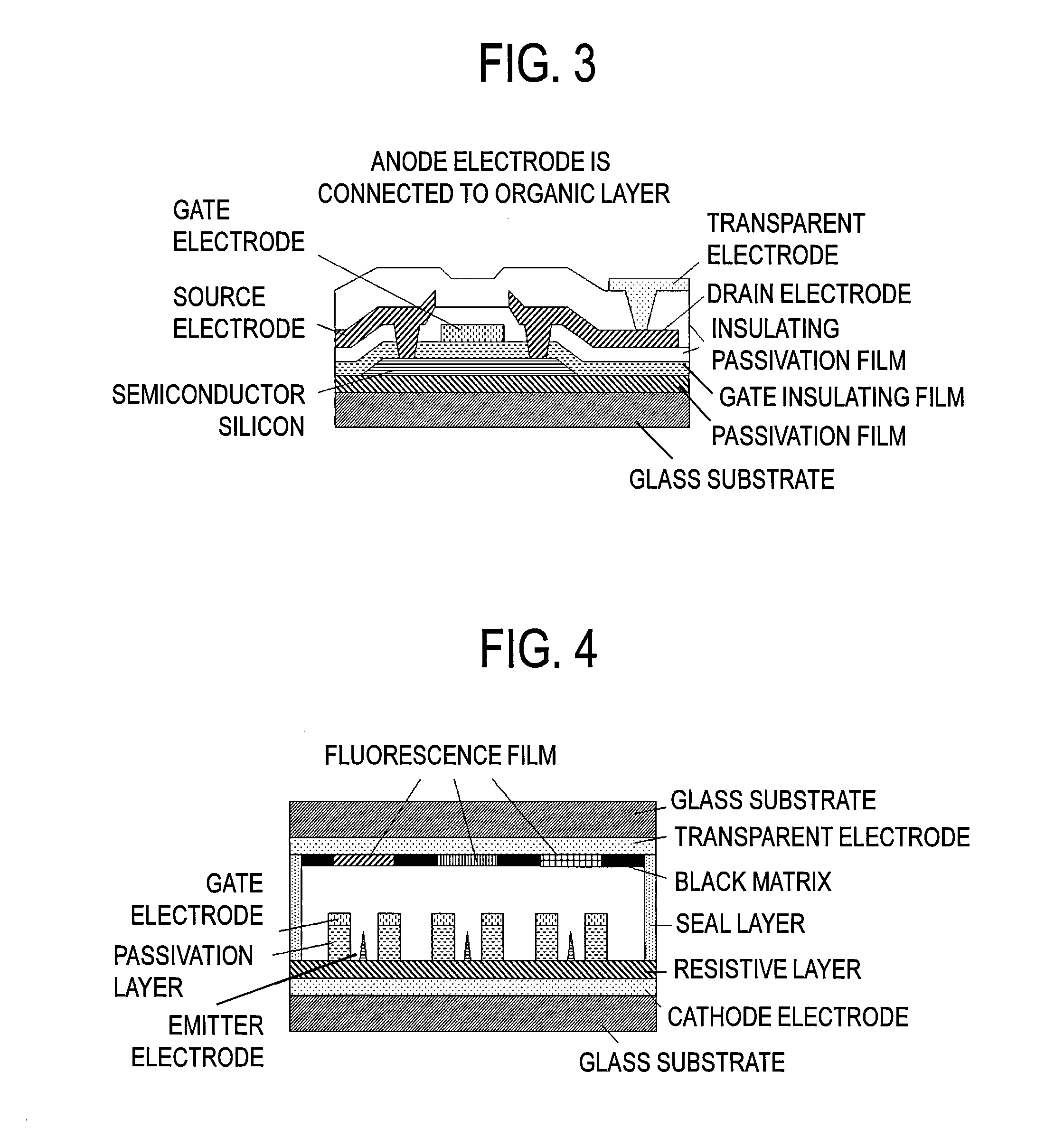Wiring structure for display device
a display device and wiring structure technology, applied in solid-state devices, record information storage, metallic material coating processes, etc., can solve the problems of conventional al-based alloy thin films having a problem of dissolving, insufficient heat resistance at high temperatures, etc., to achieve satisfactory low electrical resistance (wiring resistance), excellent heat resistance, and enhanced resistance to hydrofluoric acid
- Summary
- Abstract
- Description
- Claims
- Application Information
AI Technical Summary
Benefits of technology
Problems solved by technology
Method used
Image
Examples
example 1
[0130]In this example, samples of the first wiring structure were prepared as shown in Table 1. Each nitride film of various compositions shown in Table 1 was deposited as the second layer on Al alloys of compositions shown in the same table (the first layer). After the heat treatment at 450° C. to 600° C., electrical resistance, heat resistance (hillock density), and resistance to hydrofluoric acid of the wiring structures were evaluated. All of the Al alloys of the first layer used for this example are Al-group X element-REM alloys which satisfy the requirements of the present invention. In the tables, atomic percent is described as at %.
[0131]Firstly, the Al-0.5 at % Ta-2.0 at % Nd-0.1 at % Ni-0.5 at % Ge, Al-0.5 at % Ta-2.0 at % Nd-0.1 at % Ni-0.5 at % Ge-0.35 at % Zr, or Al-0.5 at % Ta-2.0 at % La-0.1 at % Ni-0.5 at % Ge alloy films (the first layer with a thickness of 300 nm) were deposited by a DC magnetron sputtering method on glass substrate (Eagle-XG, manufactured by Corni...
example 2
[0145]In this example, the wiring structure was prepared in the same manner as for Example 1 except that Al alloy for the first layer and nitride for the second layer were varied as shown in Tables 2-5. After the heat treatment at 450° C. to 600° C., electrical resistance, heat resistance (hillock density), and resistance to hydrofluoric acid of the wiring structures were evaluated in the same manner as Example 1.
[0146]The results are shown in Tables 2-5.
TABLE 2AThe second layerHeat Resistance (thickness: The first layerresistanceto50 nm)(thickness: 300 nm)Wiring resistance(hillock density)0.5% HFNo.CompositionComposition450° C.550° C.600° C.600° C.600° C.1Ti—NAl-0.1 at % Ta-0.3 at % Nd-0.1 at % Ni-0.5 at % Geexcellentexcellentexcellentexcellentexcellent2Ti—NAl-0.1 at % Ta-0.3 at % La-0.1 at % Ni-0.5 at % Geexcellentexcellentexcellentexcellentexcellent3Ti—NAl-0.1 at % Ta-0.6 at % Nd-0.1 at % Ni-0.5 at % Geexcellentexcellentexcellentexcellentexcellent4Ti—NAl-0.1 at % Ta-0.6 at % La-0...
example 3
[0149]In this example, as the second wiring structure, each of the second and third layers of various compositions was deposited in that order on each of the Al alloy (the first layer) shown in Table 6. After the heat treatment at 450° C. to 600° C., electrical resistance, heat resistance (hillock density), and resistance to hydrofluoric acid of the wiring structures were evaluated in the same manner as Example 1. All of the Al alloys of the first layer adopted in this example are Al-group X element-REM alloys which satisfy the requirements of the present invention.
[0150]Specifically, each of Al alloy film of Table 6 (the first layer, thickness: 300 nm) was first deposited on a glass substrate in the same manner as described in Example 1.
[0151]Next, each of nitride film No. 1-50 of Table 6 (the second layer, thickness: 50 nm) was deposited in the same manner as described in Example 1.
[0152]Each of the No. 1-50 metal films (the third layer with a thickness of 20 nm) described in Tabl...
PUM
| Property | Measurement | Unit |
|---|---|---|
| thickness | aaaaa | aaaaa |
| thickness | aaaaa | aaaaa |
| size | aaaaa | aaaaa |
Abstract
Description
Claims
Application Information
 Login to View More
Login to View More - R&D
- Intellectual Property
- Life Sciences
- Materials
- Tech Scout
- Unparalleled Data Quality
- Higher Quality Content
- 60% Fewer Hallucinations
Browse by: Latest US Patents, China's latest patents, Technical Efficacy Thesaurus, Application Domain, Technology Topic, Popular Technical Reports.
© 2025 PatSnap. All rights reserved.Legal|Privacy policy|Modern Slavery Act Transparency Statement|Sitemap|About US| Contact US: help@patsnap.com



